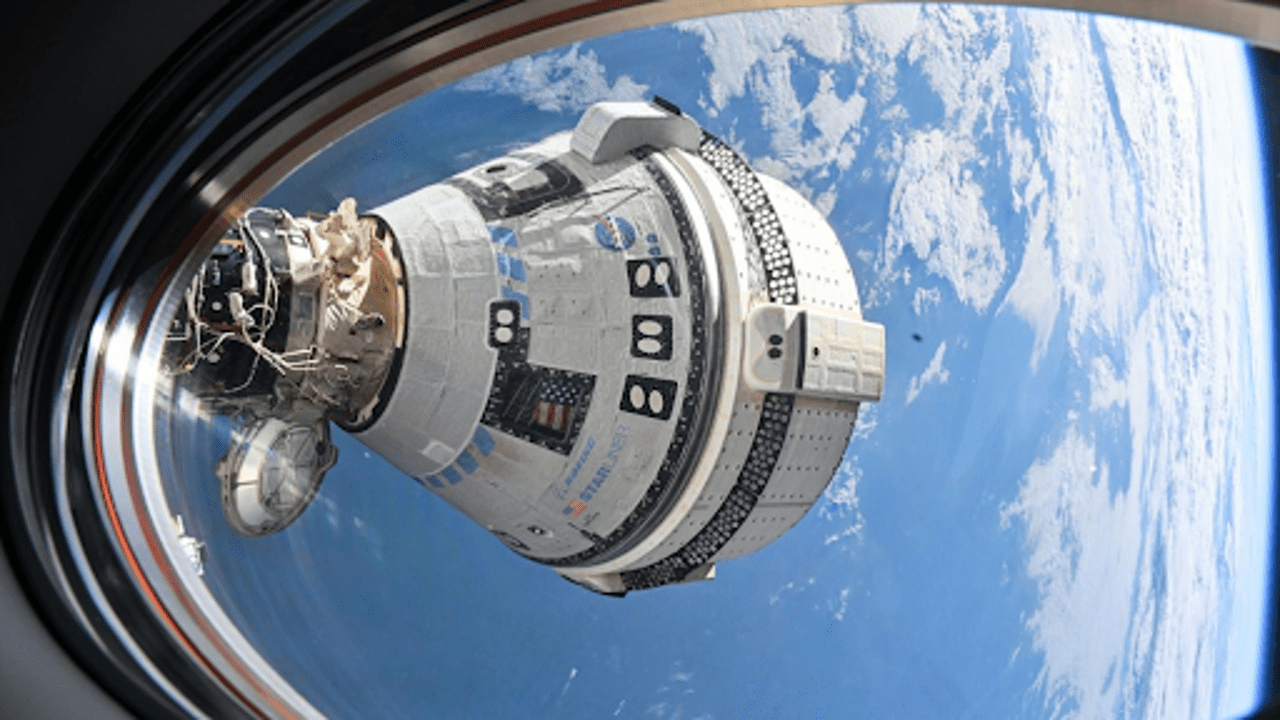
NASA astronauts Butch Wilmore and Suni Williams travelled to the International Space Station aboard Boeing's Starliner spacecraft, which is shown docked at the Harmony module's forward port on July 3. Picture courtesy: NASA
Veteran NASA astronauts Butch Wilmore and Suni Williams have been in space for 63 days, far longer than initially expected during their first crewed test flight of Boeing’s Starliner spacecraft. Despite the extended duration, there is still no clear return date in sight, and NASA has indicated that the astronauts may not return home on the Starliner spacecraft at all.
During a recent news conference, NASA officials suggested that SpaceX, a key competitor under NASA’s Commercial Crew Program, might be tasked with bringing Williams and Wilmore back to Earth. This possibility could extend the astronauts' stay on the International Space Station (ISS) by an additional six months, pushing their return into 2025.
NASA's latest statements reflect a significant shift in its stance. Previously, officials were confident that the astronauts would return on Starliner, with the Crew Dragon backup plan being a remote possibility. However, the recent update suggests that SpaceX's vehicle is becoming a more likely option. Ken Bowersox, associate administrator for NASA’s Space Operations Mission Directorate, mentioned that their chances of an uncrewed Starliner return have increased slightly, though this could change based on new data and analysis.
The uncertainty around the return date is tied to propulsion issues with the Starliner spacecraft. Despite initial plans to start a flight readiness review in early August, NASA has yet to begin this process. Boeing and NASA teams are still working on resolving propulsion issues and helium leaks that have plagued the Starliner mission since its launch on June 5. Ground tests conducted in New Mexico revealed unexpected results, including excess heat around some of the Starliner thrusters, causing Teflon seals to bulge and restrict propellant flow.
NASA officials are divided on the safety of returning the crew on Starliner due to these thruster issues. As they work to determine the root cause and potential dangers, the space agency is increasingly considering alternative return methods for Williams and Wilmore. Boeing maintains that Starliner is safe for the astronauts' return, as stated in a recent statement.
Several contingency plans are being considered if Starliner is deemed unsafe. One option is to launch the planned SpaceX Crew Dragon mission, Crew-9, with two astronauts instead of four, leaving two seats for Williams and Wilmore. This scenario would make them part of the Crew-9 rotation on the ISS, extending their stay by six months and delaying their return to at least February 2025. In this case, Starliner would fly home empty, and NASA would decide if the mission data is sufficient to certify Starliner for routine trips.
Despite the planning, NASA has not yet committed to this backup plan. Steve Stich, NASA’s Commercial Crew Program manager, noted that while preparations are underway, no formal decision has been made. He added that returning the astronauts aboard Starliner remains the prime option.
Complicating matters, NASA announced a delay in the launch of SpaceX’s Crew-9 mission, originally slated for August 18. The new launch date is September 24, allowing more time to finalize return plans for the Starliner crew. This delay gives NASA flexibility in deciding whether to use the Starliner or opt for the Crew Dragon contingency plan.
Switching from the primary plan of using Starliner to Crew Dragon introduces additional risks to the mission profile, which NASA must carefully weigh. If Starliner is to fly home empty, it will require a software update to configure it for an autonomous flight, a task that would revert the spacecraft’s computers to older code and necessitate thorough testing.
As of now, it remains to be seen whether NASA will choose to return the astronauts on Starliner or proceed with the contingency plan. According to Bowersox, the decision could shift significantly based on new data and analysis.















